
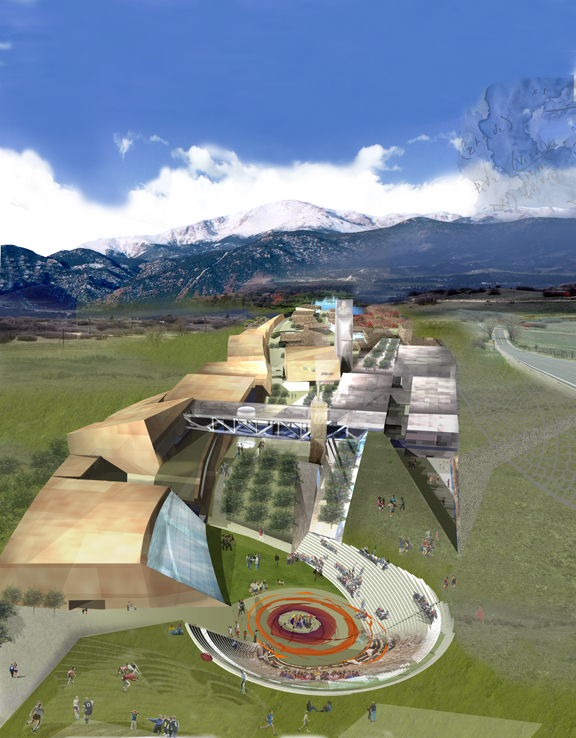
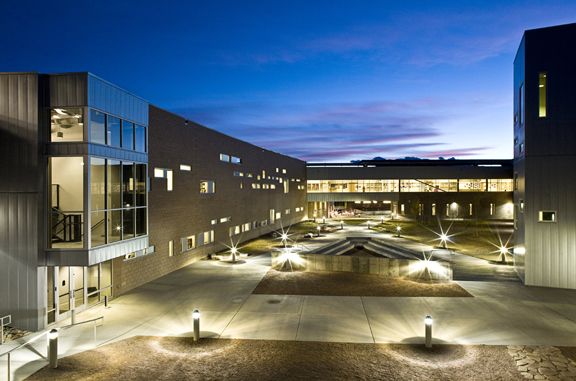
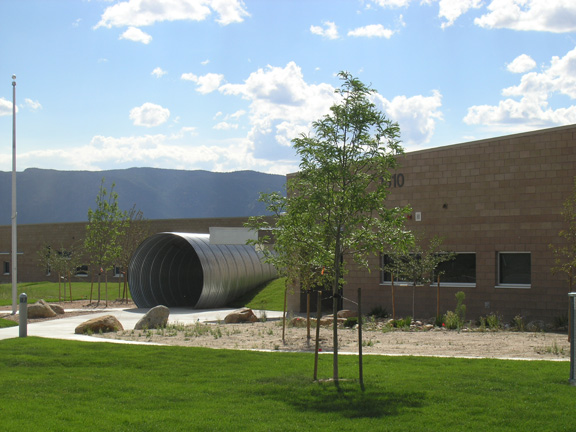
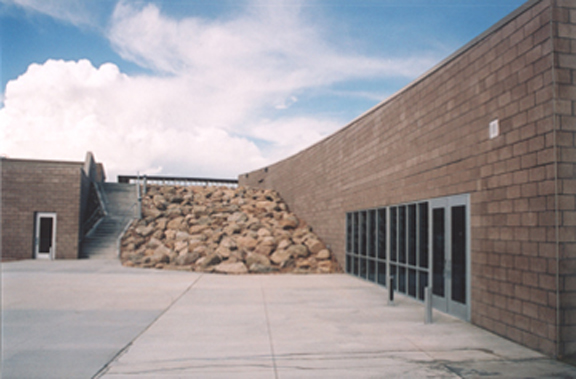
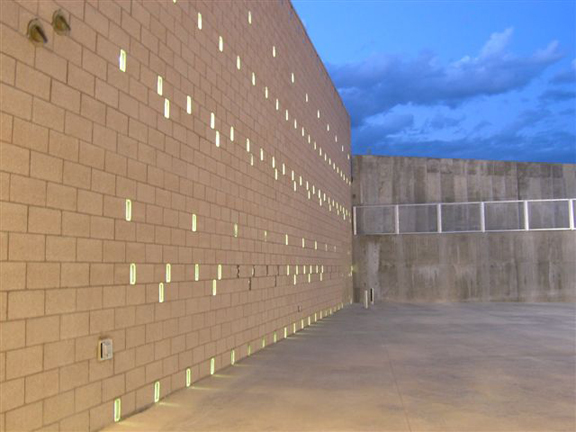
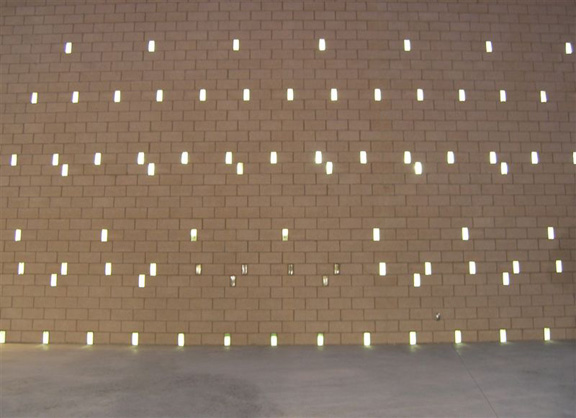
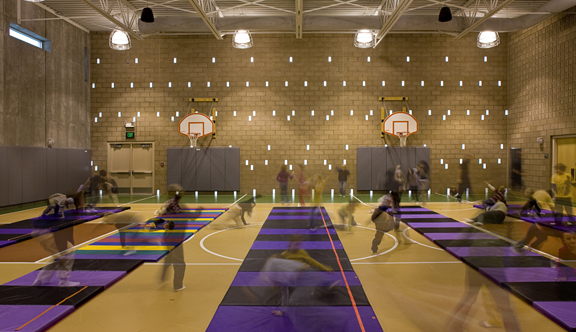
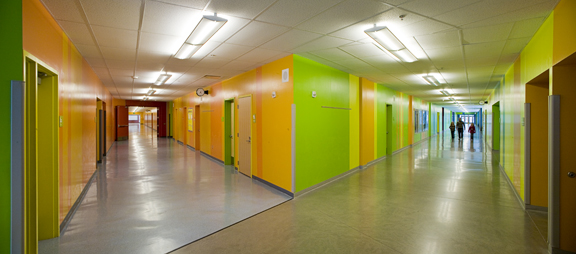
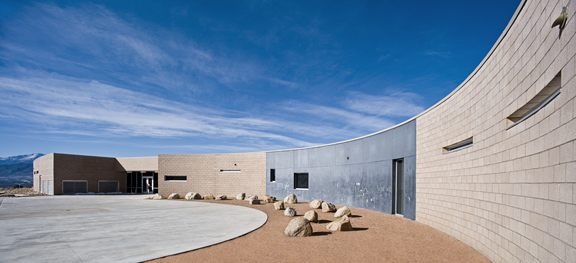
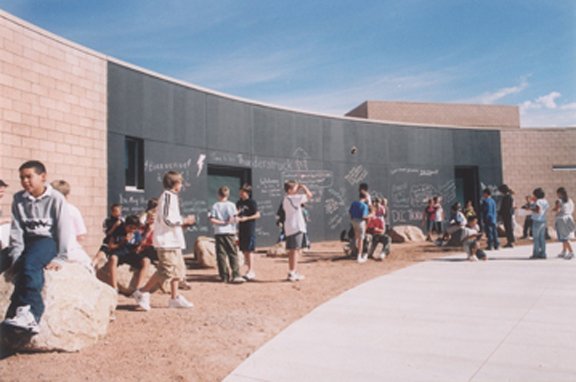
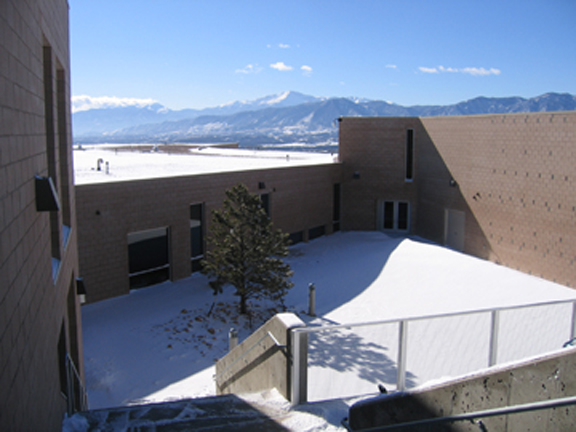
|
SCIENCE CANYON
Colorado Springs, Colorado
2003/2007
SCIENCE CANYON is
a learning encounter between students/faculty/visitors and the high plains
topography of eastern Colorado Springs. View alignments to Pikes Peak
punctuate the experience. Science Canyon acts as a central organizing
device for the school - encouraging academic cross-pollination while being
mindful of the specific needs of each developmental group. Science Canyon
choreographs a stream of events and phenomena, a spontaneous journey of
discovery, visually culminating in Pikes Peak.
The entire campus is a SITE OF LEARNING, embedded with references to ancient
cultures and the origins of science and math. Mythic calendars and celestial
movements proscribe and anticipate events in the landscape. Technology
meets ritual and is played out in real life in the journey from amphitheater
and sport on the east to gardens, a fishpond /hatchery and riparian habitat
that merge with the school to the west. Major event venues like the theater
and gymnasium, and primary contact points like administration, create
the south edge of the canyon. Parking is terraced into the site, proximate
to the major venues. Views to Pike’s Peak are always prioritized
with foreground berms (built from the canyon excavation) screening cars
and foreground development to the west. The canyon terminates in a pond
– a wild life refuge that borders the elementary school creating
additional educational opportunities and stewardship training.
SCHOOL AS INSTRUMENT. The building literally functions as a receptor/observatory,
providing possibility for engagement on many levels- a SCIENCE MENU for
all participants. Principles and foundations of scientific thought are
woven throughout the school and site. Gravity experiments occur on the
science terraces, iconic towers are shaped by wind, sound and optical
principles. The architecture of the school is malleable and kinetic in
response to changing environmental conditions and seasons. Orientation
and the design of sun-control systems, both active and passive, teach
about celestial relationships and the path of the sun. Courtyards exploit
seasonal changes through deciduous trees and planting strategies based
on a Permaculture ethic. In the Ice Court accumulation of snow is measured
and mathematic principles of drift patterns are studied.
Points of commonality create thresholds or ‘ecotones’ - between
the different schools and age groups. Towers and bridges respond to the
topography of the canyon and identify important programmatic elements
reinforcing visual and experiential way finding.
ORGANIZATIONAL NEIGHBORHOODS are used to code age-specific geographies.
A canyon in microcosm, an echo of Science Canyon helps define the placement
of Kindergarten and Elementary School classrooms. Fibonacci spirals, logarithmic
segmentation, golden section geometry and solstice alignments organize
space. Wherever possible, classrooms expand outdoors to adjacent terraces
for playing, eating, or experimenting. The cellular nature of the Middle
School reflects an increasingly complex science curriculum. A labyrinth-patterned
paved court and the proto-plaza mark Middle School space. Programmatic
overlap with the High School begins to inform the design. Moving up the
Canyon toward the High School, the event stream becomes more didactic.
The scale of experience now reaches out globally. Stream flow, erosion,
water conservation and alternative energy studies take place inside and
outside High School labs and the Science Village. Music and athletic spaces
contribute to theories of kinetics and sound. The canyon is resolved in
a monumental public amphitheater and grass court. Athletic fields beyond
the amphitheater continue to the east edge of the site connecting mind
and body.
In association with executive
architect MOA Architectural Partnership
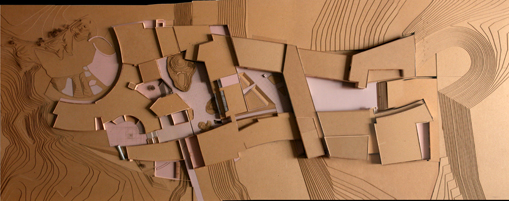
|
